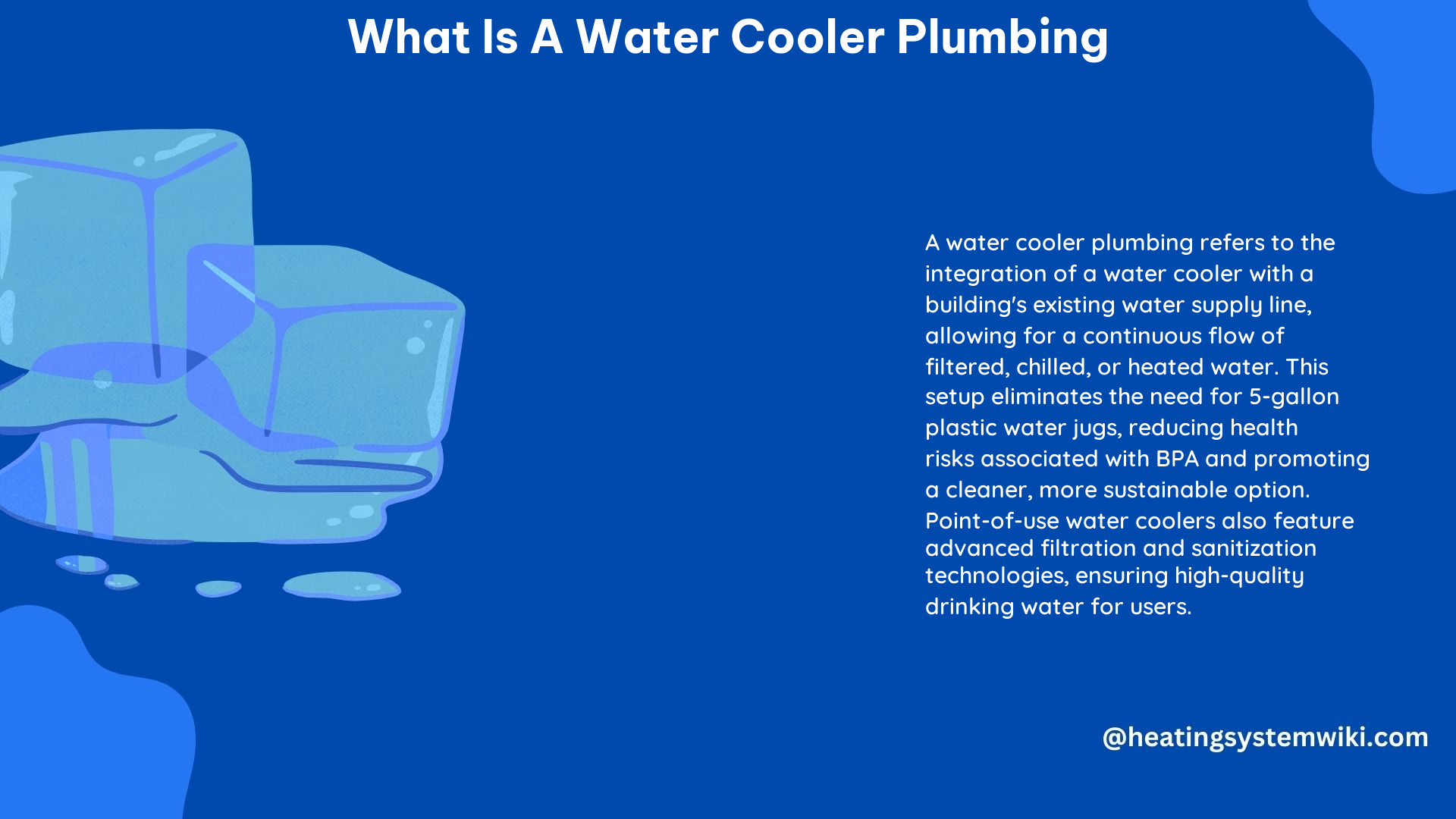A water cooler is a plumbing and refrigeration device that delivers chilled water at a consistent temperature, unlike drinking fountains that provide water at the temperature it comes through the supply line. These devices can be plumbed directly into a building’s existing water line, known as point-of-use (POU) water coolers, or they can use pre-filled bottles. POU water coolers are generally cleaner and healthier than traditional options, as they have advanced filtration and sanitization technologies that remove sediment, reduce chemical contaminants, and eliminate off-tastes and odors.
Understanding Water Cooler Plumbing Specifications
The plumbing specifications for water coolers involve connecting the device to a cold water supply line and, in some cases, a drain line. The specific requirements can vary depending on the model and local plumbing codes, but generally, the following steps are involved:
-
Cold Water Supply Line Connection: The water cooler must be connected to a dedicated cold water supply line. This line should be sized appropriately to provide the necessary flow rate and pressure for the water cooler. The typical pipe size for a water cooler connection is 1/4″ or 3/8″ copper or PEX tubing.
-
Drain Line Connection (Optional): Some water coolers may require a drain line to remove excess water or condensation. The drain line should be connected to a nearby floor drain or other approved drainage system. The drain line is typically 1/2″ or 3/4″ in diameter.
-
Shut-off Valve: A shut-off valve should be installed in the cold water supply line to allow for easy isolation of the water cooler during maintenance or repairs.
-
Pressure Regulator (Optional): Depending on the water pressure in the building, a pressure regulator may be required to ensure the water cooler operates within its recommended pressure range, typically between 30-80 PSI.
-
Backflow Prevention Device: A backflow prevention device, such as a dual-check valve, may be required to prevent contaminated water from flowing back into the building’s potable water supply.
Professional Installation vs. DIY

Water coolers must be installed and connected to the plumbing system by a qualified professional, such as a licensed plumber. This ensures the installation is done correctly and in compliance with local plumbing codes and regulations.
However, DIY installation of a water cooler plumbing system is possible for those with the necessary skills and knowledge. The process typically involves:
-
Locating the Cold Water Supply Line: Identify the nearest cold water supply line that can be tapped into for the water cooler connection.
-
Cutting and Connecting the Supply Line: Use a tubing cutter to make a clean, square cut in the supply line. Then, connect the water cooler’s supply line using appropriate fittings, such as compression or push-fit connectors.
-
Drain Line Connection (if required): If the water cooler requires a drain line, connect it to a nearby floor drain or other approved drainage system using the appropriate pipe and fittings.
-
Securing the Water Cooler: Properly secure the water cooler in place, ensuring it is level and stable.
-
Testing for Leaks: Carefully check all connections for any leaks and make any necessary adjustments.
It’s important to note that a plumbing permit may be required for DIY water cooler installation, and it is crucial to follow local plumbing codes and regulations to ensure the safety and proper functioning of the system.
Maintenance and Cleaning
Regular maintenance and cleaning of the water cooler are essential to ensure the water remains safe and clean. This typically includes:
-
Cleaning the Exterior: Wipe down the exterior of the water cooler with a damp cloth and mild, non-abrasive cleaning solution to remove any dirt or grime.
-
Sanitizing the Interior: Periodically, the water cooler’s internal components, such as the water reservoir and dispenser, should be sanitized using a food-grade sanitizer or a diluted bleach solution.
-
Filter Replacement: Replace the water filter(s) in the water cooler according to the manufacturer’s recommendations, usually every 6-12 months or when the filter indicator light turns on.
-
Descaling: Over time, mineral buildup can occur in the water cooler’s internal components. Descaling the system using a food-grade descaling solution can help maintain optimal performance.
-
Leak Inspection: Regularly check the water cooler and all plumbing connections for any signs of leaks and address them promptly to prevent water damage.
By following these maintenance and cleaning procedures, you can ensure the water cooler continues to provide clean, safe, and great-tasting water for your home or business.
Conclusion
A water cooler is a versatile plumbing and refrigeration device that delivers chilled water at a consistent temperature. Understanding the plumbing specifications, the differences between professional installation and DIY, and the importance of regular maintenance and cleaning are crucial for ensuring the proper and safe operation of a water cooler system.
Whether you choose to have a professional install your water cooler or tackle the project yourself, following local plumbing codes and regulations is essential. By taking the time to properly install and maintain your water cooler, you can enjoy the benefits of clean, filtered water for years to come.
